#central iran
Explore tagged Tumblr posts
Text
Israel bombed several locations in Iran, Syria and Iraq last night.
Here's a video of a hit military base, reportedly at least partially destroyed, at Isfahan, central Iran.
#israhell#israel#iran#syria#iraq#isfahan#central iran#iran news#iranian#free iran#video#class war#anti netanyahu#bibi netanyahu#netanyahu a criminal of war#fuck netanyahu#benjamin netanyahu#free palestine#freepalastine🇵🇸#palestine#free gaza#gaza strip#gaza genocide#gazaunderattack#gaza#ausgov#politas#auspol#tasgov#taspol
54 notes
·
View notes
Text

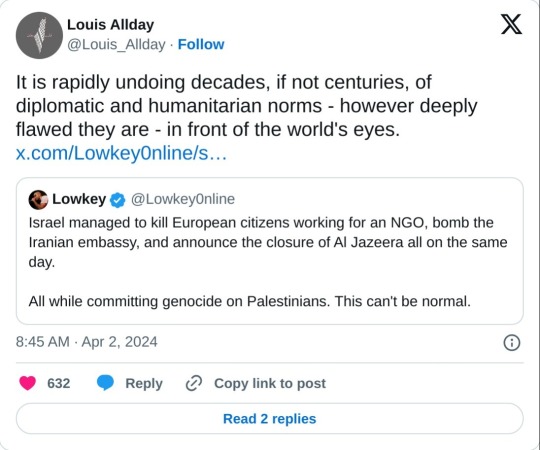
#yemen#jerusalem#tel aviv#current events#palestine#free palestine#gaza#free gaza#news on gaza#palestine news#news update#war news#war on gaza#world central kitchen#iran#syria#al jazeera#war crimes#gaza genocide#genocide
3K notes
·
View notes
Text

Though Qutlugh Turkan (c. 1208/1213–1283) began her life as a slave, she rose to become a ruler in her own right, ushering in a golden age for her lands.
A resourceful wife
Qutlugh Turkan was likely born in Transoxania between 1208 and 1213. She was enslaved as a child, purchased by a merchant from Isfahan, and given an excellent education. In 1235, she married Qutb al-Din Muhammad, the nephew of Buraq Hajib, the founder of the ruling dynasty of Kerman (in present-day Iran), a local power that emerged after the Mongol invasions.
After Buraq’s death, the Mongol Great Khan Ögedei granted Kerman to Buraq’s son, prompting Turkan and her husband to move to Transoxania. During this period, her intelligence and resourcefulness proved vital to her husband’s survival, earning him the of the local nobility.
In 1252, Qutb al-Din was installed as the ruler of Kerman. When he died five years later, it was time for Turkan to step into power.
Queen of a golden age
Turkan assumed control of Kerman in 1257, even though her husband’s male heirs were alive. The transition appears to have been smooth, with little opposition to a woman ascending the throne. She quickly established her authority, dispatching gifts to secure recognition of her rule.
Initially, Hulegu Khan granted her authority only over civil affairs, but Turkan’s persistence won her full control, including military oversight. She ruled independently for 26 years, a period celebrated as a golden age for the region of Kerman. The khutbah (Friday sermon) was proclaimed in her name in mosques, and her name appeared on coins.
Her reign brought stability and economic prosperity. Turkan was known for her equitable administration of justice and her benevolence. During times of famine, she opened the granaries to feed her people. She also initiated major building projects, including a madrasa, a hospital, a mosque, and fortified borders with new fortresses.

Coin minted during Turkan's reign
Challenges and Deposition
Turkan forged alliances with the Mongols, even marrying her daughter Padishah Khatun to Abaqa Khan, the ruler of Iran starting in 1265. She also sent troops led by her stepson (or possibly her biological son) Hijaj Sultan to support Abaqa.
However, Hijaj turned against her, publicly mocking her with this verse:
Young are your destiny and star, but old is your fortune; the one that is old should make way for the young.
Turkan sought Abaqa’s support and was reaffirmed as the ruler of Kerman. Hijaj’s attempt to depose her failed, forcing him to flee to Delhi, where he died a decade later.
Turkan’s fortunes changed with Abaqa’s death. His successor, Tegüder Ahmad, granted Kerman to her stepson, Suyurghatmish, ending her rule in 1282. Her efforts to reclaim the throne were unsuccessful and she died shortly afterward in a city in northern Iran.
Turkan’s daughter, Padishah Khatun later reclaimed the throne and ruled Kerman in her turn.
Enjoyed this post? You can support me on Ko-fi!
Further reading
De Nicola Bruno, Women in Mongol Iran: The Khatuns 1206-1335
Mernissi Fatima, The Forgotten queens of Islam
“QOTLOḠ TARKĀN ḴĀTUN”, Encyclopedia Iranica
#Qutlugh Turkan#history#women in history#women's history#historyedit#13th century#medieval women#ruling queens#queens#powerful women#iran#iranian history#kerman#central asian history
78 notes
·
View notes
Text




Jewelry Elements
Late 14th–16th century, attributed to Iran or Central Asia
Medium: Gold sheet; worked, chased, and set with turquoise, gray chalcedony, and glass
Few examples of medieval Islamic jewelry survive, leaving scholars to rely on depictions of jewelry in manuscript paintings of the period for evidence of their appearance. Imagery from Ilkhanid and later period painting reveals that necklaces sharing some details with the jewelry elements shown here were worn by women in the fourteenth to sixteenth century in Iran and Central Asia.
32 notes
·
View notes
Text










#iran#west asia#dance#traditional clothing#central asia#culture#persian dance#persian aesthetic#vintage film
11 notes
·
View notes
Text
"Borne from a long history of strife, Kurdish culture places value on individual freedoms. Whether it be overt religious tolerance, strides towards equality in the status of women, or democratic government, Kurdish culture values individual life and has fiercely defended its ability to live free from external rule."
While combating antisemitism, Jews should also be drawing attention to the countless other minority groups currently being oppressed around the world, most of whom seem invisible even to the average Western keyboard warrior.
#kurd#kurdistan#kurdish#kurds#iran#iraq#syria#turkey#mountains#nomadic cultures#middle east#south asia#central asia#asia#mena#world#human rights#jewblr
17 notes
·
View notes
Text
reminder that asia is. fucking massive. btw
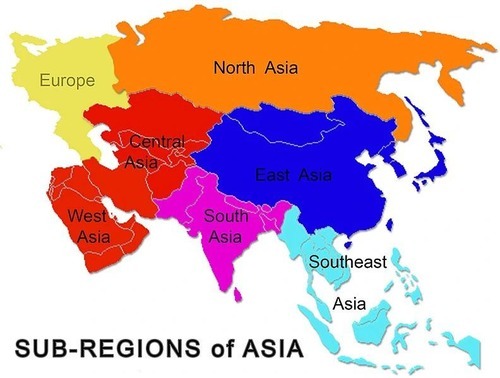
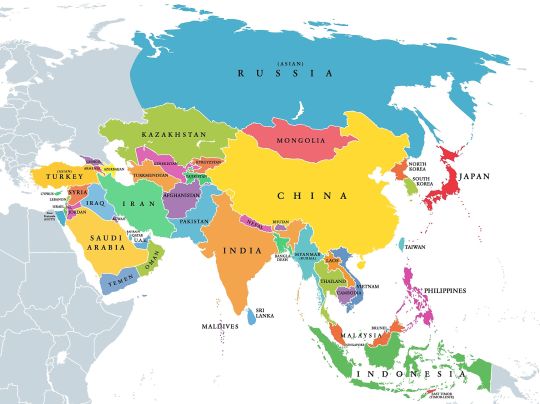
#arcana.uploads#asia.#a LOTTA ppl just. forget west asians central asians north asians south asians & southeast asians#its not just china japan & korea !! & even then china for example has MANY indigenous peoples & cultures !!#what's happening w/ palestine syria iran lebanon myanmar cambodia & china w/ the uighurs is an asian issue.#what's happening w/ antisemitism & antiromanyism is an asian issue!! bc remember they're both from asian countries !!#as well as islamophobia !!#idk i hope im making sense im v tired#but basically it's a MASSIVE continent with THOUSANDS of different peoples cultures & religions !!#+ what's happening w/ indigenous siberians & papua new guinea is an asian issue too btw !#& armenia too !#it's a Lot™
34 notes
·
View notes
Text
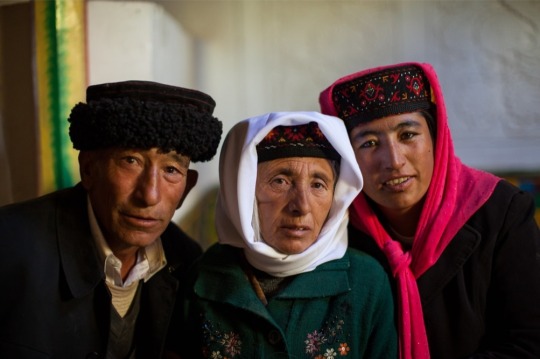
Pamiri Tajiks, South Xinjiang, China
69 notes
·
View notes
Text
Israel's Real Iron Dome

Arab Leaders were installed to safeguard Israel and Western interests, not to liberate their occupied lands nor liberate Occupied Palestine.
#photography#gaza#palestine#palestinians#free palestine#islam#islamophobia#israel#iron dome#iran#benjamin netanyahu#middle east#iran attack#genocide#world central kitchen#al shifa hospital#israel is a terrorist state#israel is committing genocide#israel is an apartheid state#israel is a war criminal#israel palestine conflict#israeli war crimes#israeli terrorism#jews#israel hamas war#israeli occupation#israeli apartheid#israeli genocide#israeli army#israeli airstrikes
27 notes
·
View notes
Text
The people again march against the burning of diesel fuel in the Shazand Thermal Power Plant built for burning gas, resulting in pollution of their homes in Arak, central Iran.
Also, it's right next to a National Park, and to agriculture, so that's... not great either.
#shazand thermal power plant#diesel#fossil fuels#fuel#gas#pollution#arak#central iran#iranian#iran#pollutants#polluted water#polluted air#ausgov#politas#auspol#tasgov#taspol#australia#fuck neoliberals#neoliberal capitalism#anthony albanese#albanese government#environmentalism#environmental activism#environmental#environment#enviroment art#environmetalists#enviromental
4 notes
·
View notes
Text
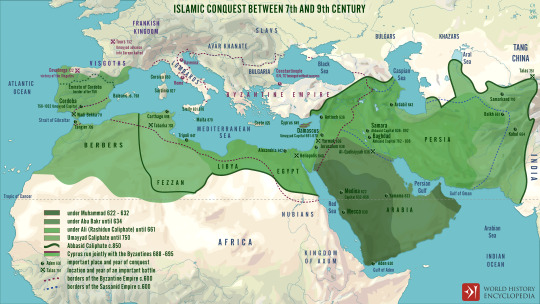
What made Arabisation so successful in the Levant and North Africa, whereas it failed in Iran, India, and the Caucasus?
Arabisation's success in the Levant and North Africa can be attributed to various historical, cultural, and geopolitical factors. The Arab invaders in these regions established centralized rule, which facilitated the spread of Arabic language and culture, I$|@m forced to them and played a crucial role as a unifying force, encouraging adoption of Arabic for religious purposes.
On the other hand, in regions like Iran, India, and the Caucasus, Arabisation faced challenges due to pre-existing rich and established civilizations with their own distinct languages and cultures, which was so much greater than arabs culture, In these areas, the local populations were more resistant to adopting Arabic, and their societies were not as readily assimilated into the Arab-dominated political structures.
in Iran, the Persian language had deep-rooted cultural significance, and Persian dynasties maintained their own identity and resisted Arabisation. In India, the vast and diverse society made it challenging for Arabic to become the dominant language. The Caucasus, with its diverse linguistic landscape and mountainous terrain, also hindered widespread Arabisation.
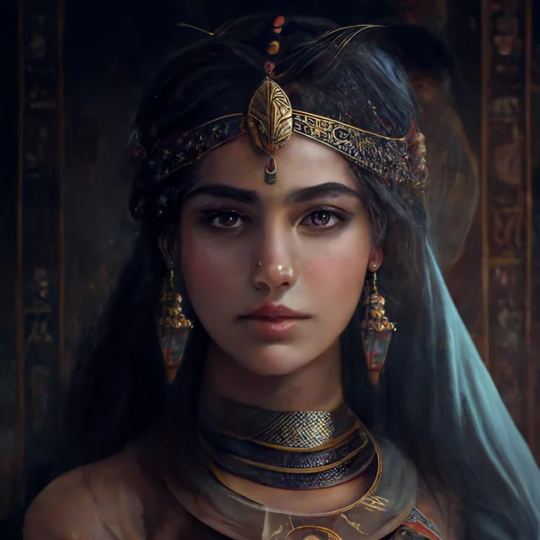
**Resistance and Nationalism**: In places like Iran, there was a strong sense of Persian identity and nationalism till today that resisted Arabisation. Persian language and culture have a long-standing and deeply rooted history that predates Abrahamic religions and the Arab conquests. The same applies to India, where there is a rich tapestry of local languages and cultures, and the Caucasus, where local nationalisms played a role in resisting Arabisation.
the success of Arabisation in the Levant and North Africa was facilitated by factors like centralized rule, religious influence, and a more receptive environment, whereas in Iran, India, and the Caucasus, the pre-existing cultural and linguistic diversity posed significant barriers to its adoption.
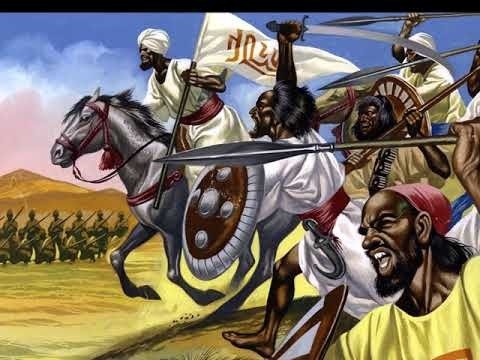

#kemetic dreams#islam#islamic jihad#colonization#north africa#levant#western asia#central asia#persian#brownskin#ancient persia#persistence#affirm and persist#persimmon#iran#india#bharat#critical role#african culture#asian culture#asians#asian conquest#brown skin#Arab
61 notes
·
View notes
Photo

Newlyweds in Tajikistan - Jeremy Weate
42 notes
·
View notes
Text

The daughter of a great queen, Padishah Khatun (1256–1295) fought for her rights and proved herself to be a capable and determined ruler.
A strategic alliance
Padishah was the daughter of Qutb al-Din Mohammad, a member of the Qutlugh-Khanid dynasty, which was loyal to the Mongol Empire, and his wife, Qutlugh Turkan. After Qutb al-Din’s death in 1257, Turkan seized power, ruling Kerman (modern-day Iran) in her own name.
Padishah, her mother’s favorite child, received an exceptional education and excelled in poetry and calligraphy. In 1272, she married Abaqa Khan, the ruler of the Ilkhanate. Her marriage came with a grand household, and she frequently met with her mother and acted as her representative at court. This position was vital for defending her mother’s interests and maintaining her rule over Kerman
A wronged daughter
The death of Abaqa Khan in 1282 changed everything. His successor, Tegüder Ahmad, deposed Turkan and handed the throne of Kerman to Turkan’s stepson, Suyurghatmish. Soon after, Turkan passed away. Padishah chose not to accompany her mother’s remains back to Kerman, instead remaining at court to safeguard her interests. However, she sent her sister, Bibi Terken, to represent her in Kerman.
Tegüder’s reign was short-lived. In 1284, his successor Argun summoned Suyurghatmish to court and divided Kerman between Padishah and her rival. Unsurprisingly, Padishah was disappointed by this decision. Meanwhile, Suyurghatmish strengthened his position by marrying a Mongol princess, Kurdujin Khatun, eventually regaining full control of Kerman.
Padishah later married Argun’s brother, Gaykhatu. Although she managed to recover her personal domain of Sirjan in 1289, she had to wait patiently for the tides to shift in her favor.
Queen at last
Argun’s death in 1291 paved the way for Padishah’s return to power. Gaykhatu, now head of the Ilkhanate, reinstated Padishah as ruler of Kerman in 1292. She adopted the title Safwat al-Dunya wa al-Din (“Purity of the World and the Faith”) and also referred to herself as Ḵodāvand-e ʿĀlam (“Lord of the World”), a title that appeared on her coins.
Her first act was to neutralize her opposition. She imprisoned Suyurghatmish, and, doubting his loyalty, had him strangled.
Like her mother, Padishah’s reign was marked by justice and a dedication to the welfare of her people. She encouraged charitable works and extended her influence to nearby regions. Writing under the pen name Lāla Ḵātun, she composed poetry and supported scholars and poets.

Cycle of revenge
The assassination of her husband Gaykhatu in 1295 by his successor, Baydu, placed Padishah in a precarious position. Baydu was married to Shah ʿAlam, Suyurghatmish’s daughter, who sought revenge for her father’s death. Suyurghatmish’s widow, Kurdujin, was also ready to act.
Although Padishah remained in Kerman, many of her supporters abandoned her. She sought alliances but found none. Kurdujin, with the backing of loyal amirs, besieged Kerman, forcing Padishah to surrender.
Padishah was taken to court and eventually assassinated, likely at the instigation of Kurdujin and Shah ʿAlam. Her remains were returned to Kerman, where she was buried in the seminary built by her mother.
Though Kurdujin emerged victorious, she was never formally crowned ruler of Kerman, and her triumph was short-lived. She later became queen of Shiraz in 1319 and was succeeded by her niece, Sultan Khatun, upon her death. Their authority appears to have been more symbolic than political and limited to the city.
Enjoyed this post? You can support me on Ko-fi!
Further reading
De Nicola Bruno, Women in Mongol Iran: The Khatuns 1206-1335
Lambton Ann K. S., Continuity and Change in Medieval Persia Aspects of Administrative, Economic, and Social History, 11th-14th Century
Mernissi Fatima, The Forgotten queens of Islam
“PĀDŠĀH ḴĀTUN”, Encyclopaedia Iranica
#this is probably my last post of the year :)#padishah khatun#history#women in history#women's history#historyedit#13th century#iran#iranian history#queens#powerful women#ilkhanate#mongol history#kurdujin khatun#sultan khatun#kerman#central asian history
44 notes
·
View notes
Text

1 year ago (Mar 19th, 2024) - Nowruz 2024
This doodle was shown in: Canada, United States, Ireland, United Kingdom, Azerbaijan, Turkmenistan, Uzbekistan, Kazakhstan, Kyrgyzstan, Tajikistan, Afghanistan, Pakistan, India,
Doodle was made by Pendar Yousefi
#2024#1 year ago#nowruz#persian new year#spring#iran#azerbaijan#turkmenistan#uzbekistan#kazakhstan#krygyzstan#tajikistan#afghanistan#pakistan#india#central asia
6 notes
·
View notes
Text










Garmabeh (traditional Iranian bath)
Source: 1, 2, 3, 4
16 notes
·
View notes
Text
PRINCESS SHIRIN SASAN

Origin: asalee
Status: organic
Nationality/Ethnicity: Persian (Turkish-Iranian)
Age: 30s
Occupation: royal member of the House of Sasan, Gyan-Avspar
About:
Shirin Sasan is the eldest daughter of the current royal family of the Kingdom of Persia, the House of Sasan. She is a Gyan-Avspar trained in the art of hunting and killing neomesmerian conjugates.
Since childhood, Shirin has undergone Sassanid skeletal gilding, or the application of gold alloys on the surface of or inside of her bones. Being a non-magnetic material, this gives Shirin resistance to clairvoyance. Having risen to an elite status within the House of Sasan (HoS), she has also been given the title of Gyan-Avspar, one of the highest-ranking positions in the Sassanid Pushtigban (royal cavalry). She is proficient in archery, swordsmanship, and other melee combat styles. Per Pushtigban practice, she does not use gunpowder weapons.
Shirin is very serious and committed. She puts her responsibilities above all else, even if it brings adverse effects to her health or social life. She values her family and believes their moral sovereignty above rival alchemic philosophies. As part of the Pushtigban creed, she is held to high expectations of valor, is always is true to her word, and never breaks a promise.
Background:
From a young age, Shirin was educated according to Zoroastrianism alchemical knowledge passed down through her family. Her status as the oldest daughter to the current ruling king elected her as the next Gyan-Avspar, a practice taken up by the women belonging to the paternal Sassanid line. The last Gyan-Avspar was her great aunt, and she trained under her guidance throughout her life.
#mine#ouro#character#shirin#BIG DISCLAIMER OURO PERSIA IS NOT EQUIVALENT TO OUR PERSIA#not trying to group a bunch of cultures into one umbrella. ouro persia comprises turkey#iran and other central asian countries#it's to describe the political state of the region
14 notes
·
View notes